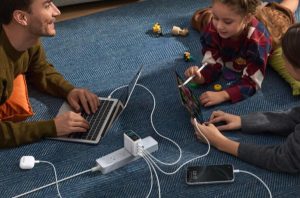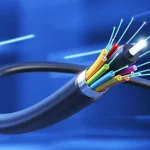Laptop chargers endure daily wear and tear that often goes unnoticed until problems arise. We’ve all experienced that moment of frustration when our device won’t charge properly, disrupting our work or entertainment. Recognizing the warning signs of a failing charger can prevent sudden power interruptions and protect your valuable laptop from potential damage. Many people continue using compromised chargers without realizing the risks they pose to both their devices and safety. In this article, we will explore the key indicators that suggest it’s time to replace your laptop charger.
Physical Damage to Cable or Connector
Visible damage to your charger’s cable or connector is one of the most obvious signs that replacement may be necessary. Fraying or cracking along the cable, particularly near the ends where flexibility is greatest, exposes internal wires to potential short circuits. Bent or loose connectors that no longer fit securely into your laptop’s charging port can indicate internal damage that affects charging efficiency. Even minor damage can worsen quickly with daily use, eventually leading to complete failure.
Intermittent or Unreliable Charging
A charger that works inconsistently often indicates underlying issues that warrant replacement. You might notice your laptop only charges when the cable is held at a specific angle or position, suggesting internal wire damage. The charging connection may drop unexpectedly, causing your laptop to switch between battery and power source repeatedly. This intermittent behavior can lead to battery calibration issues and potentially damage your laptop’s power management system. If you find yourself constantly jiggling the connector or adjusting the cable to maintain charging, it’s a clear sign the charger is failing.
Overheating or Unusual Smells
Charger becomes excessively hot during use
While some warmth during operation is normal, excessive heat from your charger indicates serious problems. If your charger becomes too hot to touch comfortably during use, it’s working harder than it should to deliver power. This overheating often results from internal component failure or electrical resistance issues within the aging unit. Consistent overheating can damage both the charger itself and your laptop’s battery over time. The heat may also indicate the charger is no longer efficiently converting power, wasting energy and potentially creating fire hazards.
Burning smell or discoloration on the charger
Any unusual odors or visual changes should immediately raise concerns about your charger’s safety. A distinct burning smell suggests electrical components are overheating to dangerous levels, possibly due to insulation failure or short circuits. Discoloration, melting, or warping of the charger’s casing indicates extreme internal temperatures that have affected the plastic housing. These signs often accompany more serious electrical issues that could potentially lead to fire hazards if ignored.
Slow Charging or Failure to Charge
Charging takes much longer than usual
A noticeable decrease in charging speed often signals charger problems that require attention. If your laptop takes significantly longer to reach full charge than it did previously, the charger may be failing to deliver adequate power. This slowdown can result from deteriorating internal components that can no longer maintain the required power output. You might notice your battery percentage increasing very slowly even during light usage, or the charging time extending beyond what you’ve come to expect. Compare current charging times with your established baseline to determine if there’s a meaningful difference.
Laptop battery drains even when plugged in
When your laptop loses power despite being connected to the charger, it’s a definite sign of charging system failure. This problem often manifests during resource-intensive tasks that draw more power than the weakened charger can provide. You might notice your battery percentage continuing to drop during use, or the system warning you about connecting a higher-wattage power source. This indicates the charger can no longer deliver sufficient power to both run your laptop and charge its battery simultaneously. The issue may start gradually, with the battery draining slowly while plugged in, before progressing to complete charging failure.
Age and Compatibility Issues
Charger is outdated for newer laptop models
As technology advances, older chargers may become incompatible with newer laptop models or updated power requirements. Manufacturers sometimes change power delivery specifications, connector types, or voltage requirements between generations. Using an outdated charger might not provide optimal performance even if it physically fits your device. The charger may fail to support newer fast-charging technologies or provide adequate power for modern components. Additionally, aging chargers naturally lose efficiency over time due to component degradation. If your charger is several years old and you’ve upgraded your laptop, it’s worth checking whether the older charger still meets the new device’s requirements.
Incompatible voltage or connector size
Using a charger with incorrect voltage specifications or a physical connector size can damage both the charger and your laptop. Voltage incompatibility might cause the charger to overwork itself trying to meet power demands, leading to premature failure. Physical connector mismatches, even if they seem to fit, can create poor connections that lead to intermittent charging and potential damage to your laptop’s charging port. Some users try to force connectors that don’t quite match, risking permanent damage to both devices. Always ensure replacement chargers match your laptop’s exact specifications rather than assuming similar-looking connectors will work properly.
Conclusion
Recognizing warning signs—such as physical damage, unreliable performance, overheating, slow charging, or compatibility issues—helps you replace a laptop charger before it fails completely or damages your device. Continuing to use a faulty charger increases the risk of sudden power loss during use and potential harm to the battery and internal components. Investing in a high-quality replacement, like those from Anker, ensures reliable performance and protects your laptop in the long run. A dependable charger is key to maintaining your device’s performance and lifespan.







